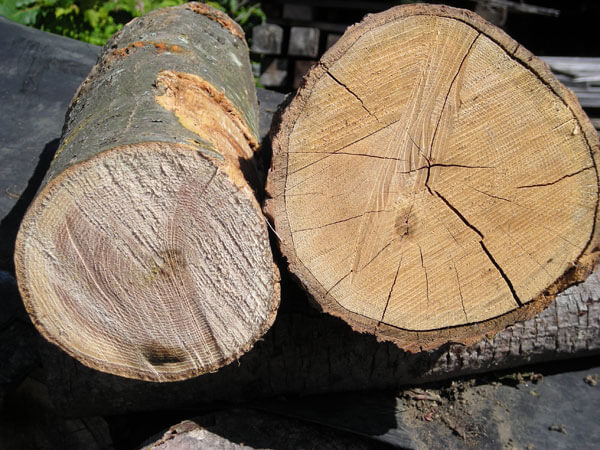
Why You Shouldn’t Burn Unseasoned Wood in Your Fireplace
As the temperatures drop and we get busy doing pre-winter chimney inspections, we get asked a lot about firewood. Ash trees are great for firewood and actually grown to cut down for firewood, however due to Emerald Ash Borer, an invasive pest that kills Ash trees, firewood is limited to traveling across most state lines. Find more information on what EAB looks like and how Illinois is trying to prevent the spread of it here. Although we do not have a particular vendor to recommend, ask your neighbors or find a local vendor.
What we can do is educate you on what seasoned wood looks like. If you accidentally bought fresh wood or got bamboozled by a bad Craiglister, the good news is that your green (fresh) wood will age nicely and be ready for next year.

Image source: Wikipedia
Green wood has no cracks, the bark is firmly attached and it is likely to sizzle or bubble at the edges when it is placed on the fire.
Since it wasn’t seasoned or allowed to dry, the green wood uses its energy trying to remove the moisture from the wood rather than warming your home. It is an inefficient use of your firewood and a waste of money to burn it that way. A common misconception is that unseasoned wood will not light. This is incorrect, unseasoned wood is more difficult to get lit and then will burn very inefficiently.
That moisture that the green wood is burning out with so much effort is also a problem. The moisture creates smoke, creates more creosote as it burns, and sticks to your chimney. This can cause long term problems with your fireplace’s flue.
Here are a few safety tips related to burning wood in your fireplace this winter:
- Burn only seasoned wood
- Never leave a fire unattended
- Use a protective barrier
- Keep fire extinguishers handy
- Use a working smoke detector
- Call 911 and LEAVE if a fire erupts


